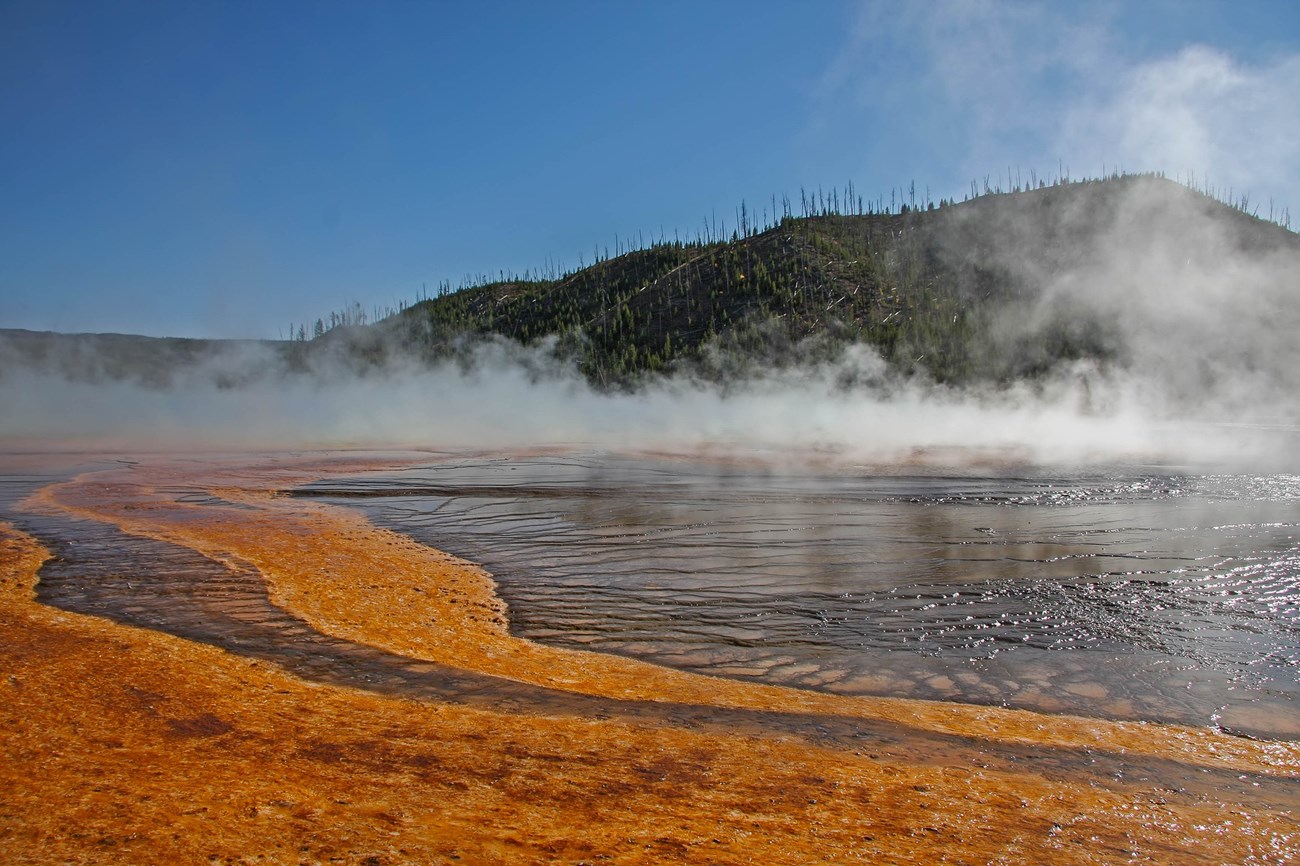Last updated: August 11, 2021
Article
Geothermal Potential

Geothermal energy is a type of heat energy generated and stored within the Earth. The energy is clean, renewable, and provides energy in the United States and around the world for electricity and other uses. Resources of geothermal energy range from hot water and hot rock found a few miles beneath the Earth’s surface and even deeper to extremely high temperatures of rock called magma. The hot water near the surface of the Earth can be used to:
- Generate electricity
- Heat or cool buildings
- Grow plants in greenhouses
- Heat water
One of the biggest advantages of geothermal energy is that it is constantly and consistently available. The continuous flow of heat from the Earth ensures an unlimited supply of energy for billions of years.
Geothermal Electricity
Wells drilled around one mile deep into underground reservoirs can tap steam and very hot water that drives turbines linked to generators and produces geothermal-generated electricity. The reservoirs are deep underground and undetectable above ground. Geothermal energy finds its way to the Earth’s surface in three ways:
Geothermal Energy in the U.S.
The United States is the world’s largest producer of geothermal energy. Today, most geothermal energy is produced in four states:
- California
- Nevada
- Utah
- Hawaii
The largest geothermal development is The Geysers north of San Francisco, California. Geothermal development on federal land requires studies to determine what effect a geothermal plant may have on the environment. For example, the geysers and fumaroles in Yellowstone and Lassen Volcanic National Parks, Valles Caldera National Preserve, Crater Lake National Park and Hawai’i Volcanoes are protected from geothermal plants because of the negative impact they would have on the area. Although some areas are protected, here are some exceptions:
- Xanterra Parks and Resorts is allowed and uses renewable wind and geothermal generated electricity to power 10% of the total electricity used in Zion National Park and 15% of the total electricity and heat at Crater Lake National Park.
- Guest Services, Inc. also has two kiosks in the National Mall and Memorial Parks that use a geothermal system for heating, air conditioning, walk-in freezers, refrigerators, and ice machines.
The advantages of geothermal energy are:
- It is available year-round.
- It is environmentally friendly and does not cause significant amounts of pollution.
- Geothermal reservoirs are naturally replenished and therefore renewable.
- Harnessing geothermal energy does not involve any additional fuels, which means less cost fluctuations and stable electricity prices.
- Geothermal systems built partially underground have a small footprint on land.
- It is available everywhere, although only some resources are profitably exploitable at this time.
